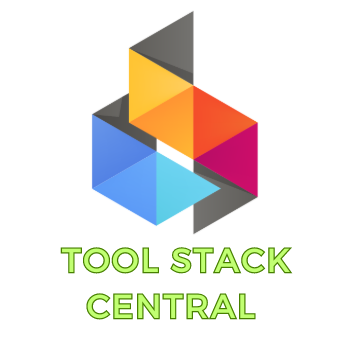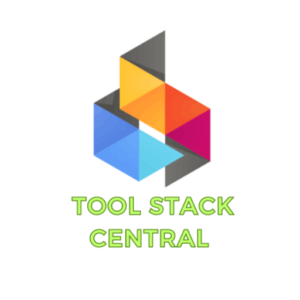JSON to YAML Converter
About JSON to YAML Converter
The JSON to YAML Converter is an essential tool for developers, system administrators, and anyone working with data formats. This tool simplifies the process of converting JSON (JavaScript Object Notation) content to YAML (YAML Ain’t Markup Language) format, making it easier to work with data across different systems and applications. With just a few clicks, you can transform complex JSON structures into a more readable and maintainable YAML format, streamlining your workflow and ensuring data consistency.
JSON and YAML are both popular formats for representing data, each with its own advantages. JSON is widely used for transmitting data between a server and a web application due to its lightweight nature and ease of use in JavaScript environments. YAML, on the other hand, is favored for its human-readable syntax and is commonly used in configuration files, where clarity and simplicity are key. The JSON to YAML Converter bridges the gap between these two formats, allowing for seamless interoperability and making it easier to manage your data across different platforms.
What is JSON Content?
JSON, or JavaScript Object Notation, is a lightweight data-interchange format that has become the standard for data transmission on the web. It is easy for humans to read and write, and easy for machines to parse and generate. JSON is primarily used to transmit data between a server and a web application, but it is also commonly used for storing data in files or databases. The format uses key-value pairs, arrays, and nested objects, making it flexible and powerful for representing structured data.
One of the reasons JSON is so popular is its compatibility with JavaScript, which makes it a natural choice for web developers. However, its usage extends beyond the web, as it is supported by many programming languages and is used in a variety of applications, from APIs to configuration files. Despite its advantages, JSON’s strict syntax can sometimes make it less readable, especially when dealing with deeply nested structures or large data sets. This is where YAML comes in as a more human-friendly alternative.
What is YAML Content?
YAML, which stands for “YAML Ain’t Markup Language,” is a data serialization format designed to be human-readable and easy to write. Unlike JSON, which uses braces and brackets to define structure, YAML uses indentation and simple syntax, making it much easier to read and edit, especially for configuration files. YAML is commonly used in software configuration management, data storage, and data exchange between systems.
YAML’s simplicity and readability make it ideal for use in environments where clarity is essential, such as configuration files for continuous integration and deployment pipelines, container orchestration tools like Kubernetes, and other system settings. By converting JSON to YAML, you can take advantage of YAML’s readability while still retaining the structured data you need. The JSON to YAML Converter makes this process effortless, allowing you to quickly and accurately transform your data.
Benefits of This Tool
- Efficient Conversion Between JSON and YAML: The tool is designed to handle both simple and complex JSON structures, ensuring a smooth and accurate conversion to YAML format. Whether you’re working with basic key-value pairs or more intricate nested objects, the tool delivers reliable results every time.
- Enhanced Readability and Maintainability of Data: YAML’s human-readable syntax makes it easier to understand and maintain your data, particularly in configuration files and settings. By converting JSON to YAML, you can make your data more accessible and easier to work with, reducing the likelihood of errors during editing.
- Facilitates Interoperability Between Different Systems: JSON and YAML are used in different contexts, and being able to convert between them allows for greater flexibility and interoperability in your projects. Whether you need to adapt data for a specific environment or ensure compatibility between different systems, this tool provides the solution.
How to Use This Tool
Using the JSON to YAML Converter is straightforward and user-friendly. Here’s how you can convert your JSON content to YAML in just a few steps:
- Enter Valid JSON Content: Start by pasting your JSON content into the left editor. Ensure that the JSON is well-formed and adheres to the correct syntax, as this will be necessary for accurate conversion.
- Click “Convert to YAML”: Once your JSON content is in place, simply click the “Convert to YAML” button. The tool will instantly process the JSON and generate the corresponding YAML content.
- View the YAML Content: The converted YAML content will be displayed in the right editor. You can review it, copy it to your clipboard, or save it for use in your projects. The clean and readable format of YAML makes it easy to work with, even for those new to the format.
Frequently Asked Questions (FAQs)
- Q: Can I convert complex JSON structures using this tool?
- A: Yes, the JSON to YAML Converter is capable of handling both simple and complex JSON structures. Whether you’re working with straightforward key-value pairs or more intricate nested objects, the tool ensures accurate conversion to YAML.
- Q: Is there a limit to the size of JSON content that can be converted?
- A: There is no specific limit to the size of JSON content that can be converted. The tool is designed to handle large data sets efficiently, making it suitable for converting JSON of any size.
- Q: Are there any formatting requirements for the JSON input?
- A: The tool accepts valid JSON content in any format. It’s important to ensure that the JSON syntax is correct, including proper use of commas, brackets, and braces, to achieve accurate conversion results.
- Q: Can I use the converted YAML content in my projects?
- A: Absolutely! The YAML content generated by this tool is ready for use in your projects. Whether you’re updating configuration files, integrating with software applications, or exchanging data between systems, the YAML output is fully compatible and easy to implement.
- Q: Is my data secure during the conversion process?
- A: Yes, the JSON to YAML Converter is designed with security in mind. Your data remains private and secure during the conversion process, ensuring that sensitive information is protected.
The JSON to YAML Converter is a valuable tool for anyone who works with data formats regularly. By simplifying the conversion process and enhancing the readability of your data, this tool can help you streamline your workflow, improve data management, and ensure that your projects run smoothly. Whether you’re a seasoned developer or just starting out, the JSON to YAML Converter is a must-have resource in your toolkit.
For more tools that can enhance your productivity and make your projects easier to manage, visit ToolStack Central. Our collection of tools is designed to meet the needs of modern developers, system administrators, and IT professionals, offering solutions that are both powerful and easy to use.

